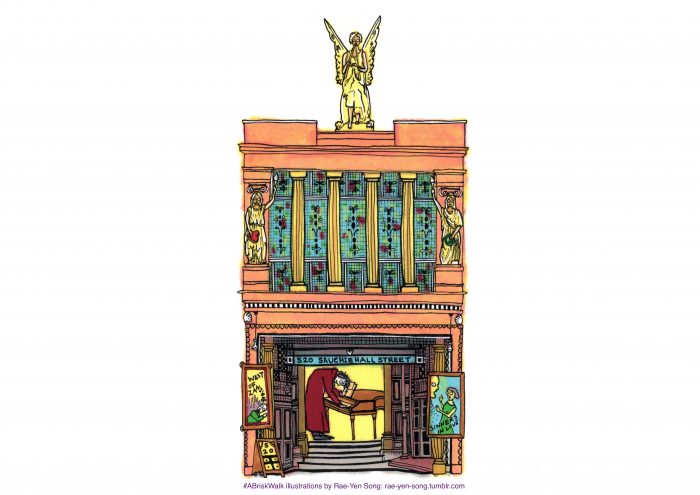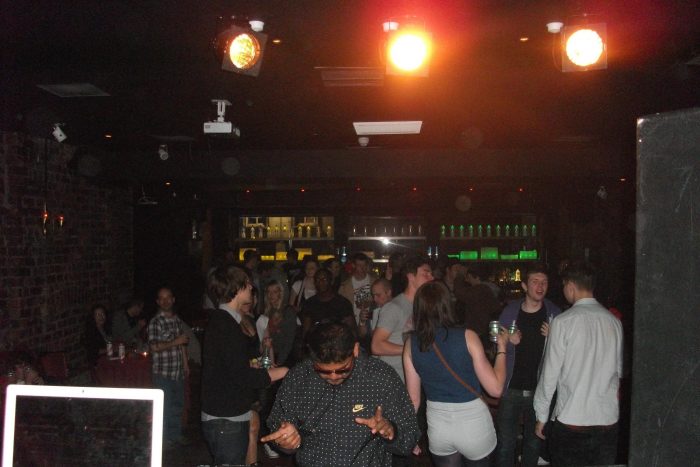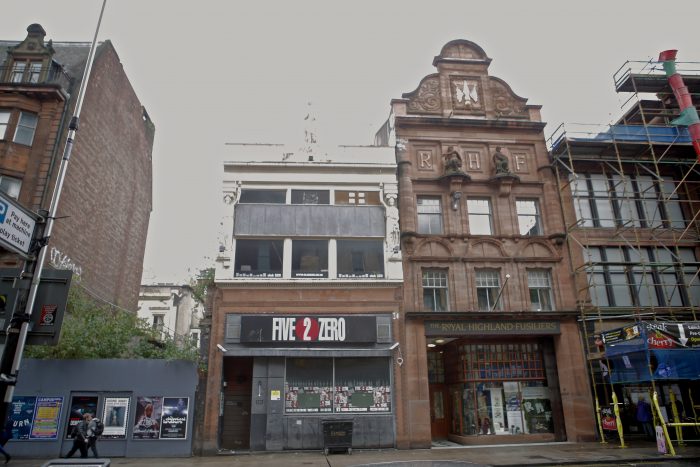We would like you to meet the cast of A Brisk Walk. Six very different characters provide the narrative of our journey through the hidden promise of buildings at risk. First up is 520 Sauchiehall Street the oldest and perhaps the most eccentric of them all.
First a little time travel. It’s hard to imagine this end of Sauchiehall Street – between the roar of the M8 and The Garage – as it might have been at the end of the 19th century. Horse drawn trams clattering past new shops, showrooms and theatres colonising sites once occupied by wealthy merchants in grand villas…though they were now beating a swift retreat to Glasgow’s west end.
Download A Brisk Walk: Buildings at Risk audio tour FREE
Number 520 is an intriguing symbol of rapidly changing times over last 120 years. It’s the first stop on A Brisk Walk: Buildings at Risk Tour, and our guide Professor Johnny Rodger, begins by linking the many incarnations of the old building with the social changes in Sauchiehall Street itself: from the shopping street of choice for middle class women to the fast foods and clubs of Glasgow’s night time economy.
At the same time this B listed curiosity on the Buildings At Risk Register evolved from genteel piano showroom to throbbing nightclub via cinemas of sometimes dubious status.
Look for clues to past identities: the Greek details – Ionic columns and sculpted torch bearers round the entrance – the pipe-playing Harmony, Greek Goddess of peace and love, watching over the building. Though we can’t see it from this viewpoint, sharp-eyed clubbers might have spotted the bust of Beethoven looming over the back entrance in Renfrew Street…
What’s the story?

It begins in around 1896 with piano seller Thomas Ewing who had commissioned architect David Paton Low to design a single story red sandstone piano showroom fronting onto Sauchiehall Street linking back to his lodgings in Albany Place – a Georgian terrace long since demolished.
The following year Mr Ewing had the showroom extended towards Renfrew Street and at the same time added a second storey salon for performances. But piano sales must have dwindled. In 1912 the building became the Vitagraph cinema and in 1914 architect John Fairweather, who specialised in theatre and cinema design, completed the transformation to the King’s Cinema – he added the sculpture decorating front and rear elevations and space inside for an orchestra to play along to films.
Names changed frequently over the decades as business adapted to growing or shrinking audiences. In the mid 1950s the short-lived newsreel cinema, Newscine, gave way to Holyrood classics in Curzons-Classics and the curtain finally fell on The Tatler in 1984 when a decade of soft porn and X rated films ended with the double bill screening: Loverboy and Blood Queen.

Night life at 520: picture by Charlotte Hamilton
New night life came with Glasgow’s booming live music scene. The old cinema returned to musical origins with a series of nightclubs. The last one, Club 520 closed in 2011.
And the building now lies empty. Its wide modern entrance boarded up but David Paton Low’s Greek details still visible.
No terraced building is self contained. After the neighbouring National Bank of Pakistan moved out in the 1990s developers planned to build a ten storey steel block on the newly cleared site but the 2008 crash put paid to that and with the party wall exposed damp has worked its way inside 520. It’s a tough site, as Johnny Rodger says, but not beyond rescue.
Download A Brisk Walk to find out more about about the building and life on Sauchiehall Street.

A tough site but not impossible: 520 as seen on Google Streetview






Leave A Comment